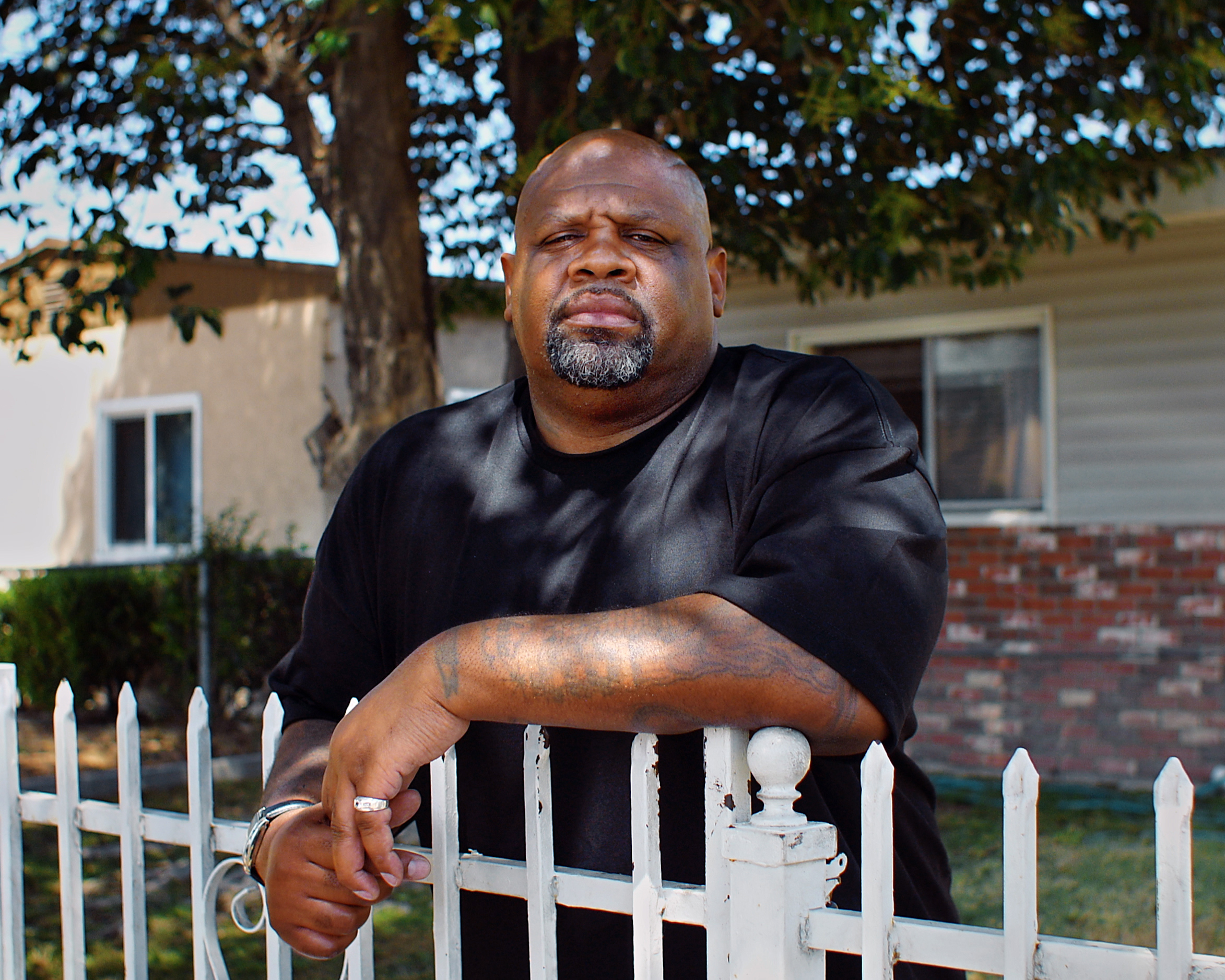A collaboration between photographer Brandon Tauszik and journalist Pendarvis Harshaw, this multimedia project follows eight people as they re-enter society after decades behind bars
In April 1992, Travielle Pope took to the streets along with thousands of others following the acquittal of four LAPD officers from charges related to the beating of Rodney King. Pope attacked a man with a wooden board, who later died from his injuries. He was convicted of first-degree murder and, at age 17, was sentenced to life without the possibility of parole.
In 2018, after 26 years behind bars, Pope was released due to California’s revised sentencing laws. Over the course of two decades, between 1985 and 2006, the state’s prison population had tripled. Rising from 50,000 to 173,000 inmates, its capacity reached almost 200 percent of its intended design. In 2011, the Supreme Court ruled that this overcrowding violated prisoners’ constitutional rights against cruel and unusual punishment. The state was ordered to reduce its prison population by a target of 137.5 percent. This resulted in the slow release of people behind bars, many of whom were adults serving life sentences for crimes committed when they were young.
But, how have these former lifers re-integrated into society and re-assembled their lives after so many years? This was the question that preoccupied LA-based photographer Brandon Tauszik. “They’re coming out amidst a sea-change of cultural and technological changes,” he says. From smaller advancements like smartphones and bluetooth to larger cultural and political shifts, many of these individuals were emerging into an unfamiliar society. Tauszik wanted to capture these experiences, “but I felt ill-equipped on my own,” he says, “it’s such a massive, complex topic”.
The photographer decided to reach out to his long-term friend Pendarvis Harshaw – a journalist with first-hand experience of working with incarcerated people. Harshaw has seen his own loved ones – including his father – go in and out of the prison system, and has worked with incarcerated individuals. He taught journalism classes at San Quentin, the oldest prison in California and home to the world’s largest publication written by incarcerated people. “Working in those facilities planted the initial seed for this project,” he says. “I saw prison firsthand and became enmeshed in the stories of the people behind the walls.”
“The cinemagraphs encourage viewers to take an extra second and appreciate what’s in front of them. In this fast-paced society, that’s all we can ask: slow down and treat people like people”
Pendarvis Harshaw
Funded by the Pulitzer Centre, Facing Life is the product of a four-year collaboration between Tauszik and Harshaw. The multimedia project lives on a dedicated website, presenting the stories of eight people who were served life sentences and released due to the reformed laws. Harshaw’s interviews are illustrated by Tauszik’s cinemagraphs – a hybrid of photography and video. “As a storyteller, I love cinemagraphs. It’s a fickle and complex medium that not a lot of people use, but when it’s done right it can be an effective way to present a portrait,” says Tauszik.
For Harshaw, these moving images “fulfil the purpose of the project. The goal is to get people – stakeholders in the government, employers, everyday people – to slow down and look at formerly incarcerated people as people… [to encourage] viewers to take an extra second and appreciate what’s in front of them. In this fast-paced society, that’s all we can ask: slow down and treat people like people.”
The eight participants of this project are just a small representation of the tens of thousands of people who are not only dealing with everyday difficulties, but also vital issues like housing, job applications, and mental health. “The amount of change that’s occurred since a lot of our participants went into prison – in the 80s or 90s – I don’t think you can name a time in human history where that much has changed in 10 to 20 years,” says Tauszik. “That brings around a lot of joy and surprise, but also a lot of frustration and ostracisation.” As Harshaw writes in an essay that lives on the project’s website: “It’s time to not only rectify the harsh penalties of the past, but to prepare for a society where mass incarceration is no longer a thing—but mass integration is.”
Discover each of the participants stories at facing.life.


